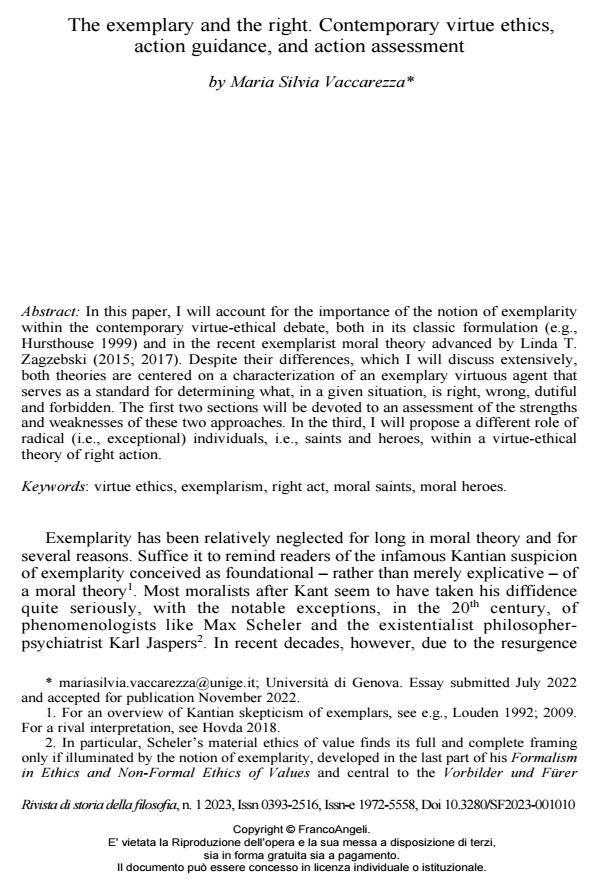The exemplary and the right. Contemporary virtue ethics, action guidance, and action assessment
Journal title RIVISTA DI STORIA DELLA FILOSOFIA
Author/s Maria Silvia Vaccarezza
Publishing Year 2023 Issue 2023/1
Language English Pages 17 P. 148-164 File size 208 KB
DOI 10.3280/SF2023-001010
DOI is like a bar code for intellectual property: to have more infomation
click here
Below, you can see the article first page
If you want to buy this article in PDF format, you can do it, following the instructions to buy download credits

FrancoAngeli is member of Publishers International Linking Association, Inc (PILA), a not-for-profit association which run the CrossRef service enabling links to and from online scholarly content.
In this paper, I will account for the importance of the notion of exemplarity within the contemporary virtue-ethical debate, both in its classic formulation (e.g., Hursthouse 1999) and in the recent exemplarist moral theory advanced by Linda T. Zagzebski (2015;; 2017). Despite their differences, which I will discuss extensively, both theories are centered on a characterization of an exemplary virtuous agent that serves as a standard for determining what, in a given situation, is right, wrong, dutiful and forbidden. The first two sections will be devoted to an assessment of the strengths and weaknesses of these two approaches. In the third, I will propose a different role of radical (i.e., exceptional) individuals, i.e., saints and heroes, within a virtue-ethical theory of right action.
Keywords: virtue ethics, exemplarism, right act, moral saints, moral heroes
- Exemplary Arguers (for Example, in Law) Amalia Amaya, in Topoi /2025 pp.813
DOI: 10.1007/s11245-024-10160-6 - The Company We Choose to Keep Nicholas Poole, in Arendt Studies /2025 pp.253
DOI: 10.5840/arendtstudies2025968 - Epistemic Role Models Michel Croce, Duncan Pritchard, in The Journal of Value Inquiry /2025
DOI: 10.1007/s10790-025-10066-5
Maria Silvia Vaccarezza, The exemplary and the right. Contemporary virtue ethics, action guidance, and action assessment in "RIVISTA DI STORIA DELLA FILOSOFIA" 1/2023, pp 148-164, DOI: 10.3280/SF2023-001010